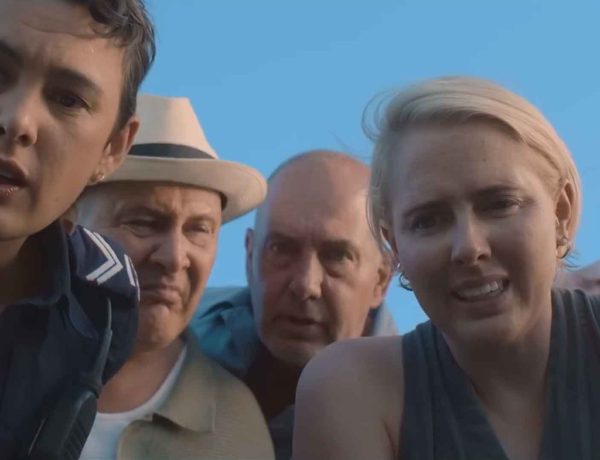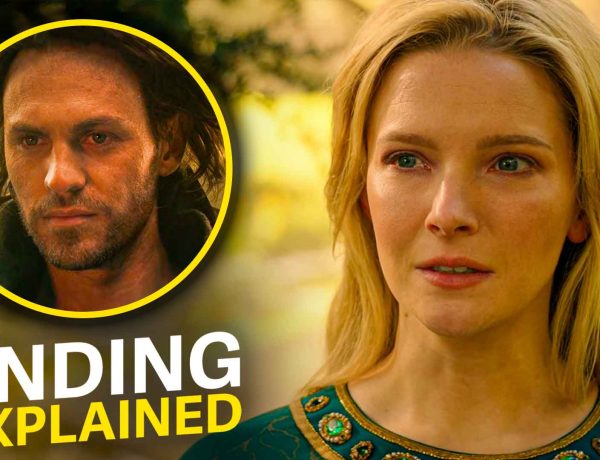Troll: Ending Explained
Troll is a film designed for the big screen. It is a pity that we experience this gigantic and masterful cinematic work by Roar Uthaug on our laptops, desktops, or TVs. It’s one of the best Kaiju films of all time, and if you have the means to counter Netflix’s anti-cinema stance, do so by watching the film on the biggest screen possible, accompanied by the loudest sound system available. , let’s talk about the film itself.
It begins with a young Nora and her father Tobias walking up a hill and observing giant trolls embedded in the mountainous landscape. 20 years later we learn that Nora has become a paleobiologist, studying fossils along the Atlantic coast of northwestern Norway. In a monumental discovery, blasting operations in the Dovre Mountains in Hjerkinn bring to life a giant creature, killing both workers and activists there. the more she realizes that her father’s “fairy tales” are probably true.
The Troll Is Pro-Environment

Image Credit: Netflix
The explosion in the mountains of Norway and the drilling to build roads and other things indicate mankind’s propensity to destroy nature to expand. But when Nora is taken to the “war room” where she meets with the Prime Minister, Secretary of Defense, and everyone else responsible for handling the current situation, we see that he is underground. Since the building is equipped with the latest technology, it shows how ruthlessly these people hollowed out parts of the Norwegian. The landscape is only to poison poisoned with electricity, fuel, and concrete. This is in stark contrast to the usual troll attitude, ie., the mountains.
They are emblematic of any anti-environmental advance and, according to Tobias, have blocked all forms of mining for thousands of years. Tobias says that the Nazis used Russian prisoners to build the Nordlandbahn but only made it as far as Bodø because “something” prevented them from going further. However, instead of accepting their place in this ecosystem, people ran a propaganda campaign against them, portraying the trolls as evil, jerks, and evil. In the film, Kaijus embodied the aftermath of humanity’s anti-Earth activities. One announcer even refers to the troll as the Norwegian Godzilla because the original Japanese Godzilla was a metaphor for nuclear weapons, given the context of the Hiroshima atomic bombings. and Nagasaki, as well as the Lucky Dragon 5 incident. Subsequent interpretations by Godzilla and other kaiju have been antagonistic, protagonist, or even neutral.
In Norse mythology, trolls are described as useless and misanthropic, while they were portrayed as slow, stupid, man-eating, and vulnerable to sunlight. While Roar Uthaug and Espen Aukan’s iteration embraces all of these metaphors, they also seem to incorporate visual artist Thomas Dambo’s use of trolls as recycled sculptures. As far as I know, Dambo has been working since 2010 and started making Scrap Trolls in 2015. Dambo’s tradition holds that trolls meet every 211 years to discuss the state of humanity. And when they step out of line and endanger the planet, the trolls take corrective action. By making these trolls, Dambo underscores the need for people to stop wasting and use recyclable and sustainable products daily. Uthaug’s film conveys the same message, but with a little more explosiveness.
The Troll Represents Anti-Christianization Sentiments

Image Credit: Netflix
During a late-night raid, Tobias raises the issue of how the troll can smell and eat people with Christian blood. It’s so absurd (yes, even more, absurd than a troll wreaking havoc) that the point slips out of my mind when the army begins attacking the creature. This is also the scene that more or less cements the fact that the film should have been seen on the big screen. The CGI and VFX are flawless. The color, the cinematography, the sound design, The editing, the special effects, and the action choreography are so brilliant that you forget Uthaug intends to stick with tradition. So if the heroes hide next to a soldier with a cross and pray to the Lord to protect them, don’t expect the troll to exclusively select and eat him. But that’s exactly what it does. Does not damage Tobias when he approaches.
He accidentally kills him when the army starts shooting at him. Based on the troll’s hatred of Christianity, Nora, Kris, and the others use helicopter-mounted church bells to defeat him. This goes wrong again. However, by rescuing a boy and his father from a crashing helicopter, the troll proves that he is non-destructive and anti-Norwegian. According to John Lindow, trolls in Scandinavian culture are not the biggest fans of Christianity. This explains their absence in some regions with churches because they don’t like the noise made by the bells. ThisThisThisThis was why trolls destroyed churches by hurling boulders and stones, with many claiming a large boulder around a church. be the work of a troll. When it comes to the subject of Christianization, it happened in Scandinavia and other Nordic and Baltic countries between the 8th and 12th centuries. Historians say it was not imposed on the Scandinavians by foreign states. Instead, it was voluntarily adopted by the kings of the time.
However, these kings destroyed pagan temples to make way for Christianity, leading to rebellions. Paganism waned and dwindled over the years until its end in the 18th century. Although Christianity is the largest religion in Norway, the troll seems to represent this bygone pagan age. Therefore he opposes the union between Norwegians who have converted to Christianity and those who are not, believers in paganism. or atheists. But the efforts of Nora and the others to tell him to retreat to the mountains show that the troll’s antichrist feelings are no longer relevant. Yes, Christians have a history of violence, slavery, anti-Semitism, and not-whatnot not whatnot. However, that probably doesn’t exist in Norway, and the troll can end up leading to bigotry where none exists.
What Does The Monster’s Conclusion Mean? Does The Mid-Credits Suggest There Are More Trolls?

Image Credit: Netflix
Governments are inherently misanthropic. So they decide to evacuate Oslo and atomize the troll before it reaches the city. On the other hand, Nora and Andreas investigate the person named Rikard Sinding, as his name is mentioned in Tobias’ diary. Andreas says that Sinding lives in the palace of the Lord Chamberlain (the highest official of the royal court who advises and assists the king and other members of the royal family). Nora remembers it. Her father’s last words were “palace”, “home” and “king”. Once inside the palace, Sinding leads Nora and Andreas to an underground cave full of giant bones. The cave was home to the king of the trolls (that’s the guy who roams Norway), and the royal palace was built over it to assert supremacy. It was discovered almost in 1920 and then again 12 years ago by Tobias. So, Sinding admits that the royals have Tobias’s brains and are ‘roasted’. She ruined their lives so no one can believe what they saw.
Sinding explains that during the Christianization of Norway, Olav the Saint rid the country of everything inconsistent with the new faith, including trolls. , created an ambush for the trolls, and massacred the family of the king of the mountain. Olav kept one alive to lure the king to the Dovre mountains and then imprison him in the cave where we meet the king at the beginning of the movie. The end credits show another awakening troll who can only mean he is the son of the king. What are you going to do? Well, my best guess is that he’s going to avenge his father’s death. How does his father die? Nora realizes that ultraviolet light turns trolls to stone. So he asks Kris to set up many UV lamps that they will use on the king. To lure the troll there, Nora and Andreas take one of the skulls, place it behind a minivan and let it follow them until they reach their destination. Meanwhile, Sigrid (Andreas’ fellow “Star Trek” lover) accesses the Department of Defense’s computer system to prevent the plane from launching the atomic bomb.
Sigrid briefly manages to dodge the nuclear attack, and Nora, Andreas, Kris, and their team manage to capture the troll in the UV light. But when the troll’s skin begins to sizzle, Nora stops him and begs him to bring the creature back to the mountains. Unfortunately, before he can move, the sun rises in Norway and turns the troll to stone. He falls to his knees and then to the ground. Nora shares a tender moment with him and finally names the mountain he created “Tobias Boulder.” It’s a nice way to commemorate the character, as Tobias was the only one who believed in trolls when no one else did. He is the only human who tried to treat him humanely while everyone else saw him as a threat. On top of that, the death of the mountain king shows that if he had risen into the sun, his journey would have ended one day. Nobody had to resorts resort to any kind of violence. More importantly, all of this chaos could have been avoided if humans had used natural means of communication instead of carving themselves in the face of the earth. Now, the Norwegians (in the movie) learned that lesson the hard way. , we can only hope that they act accordingly.
Read More : Gossip Girl Season 2 Episode 2 Recap & Ending Explained: HBO Max





No Comments